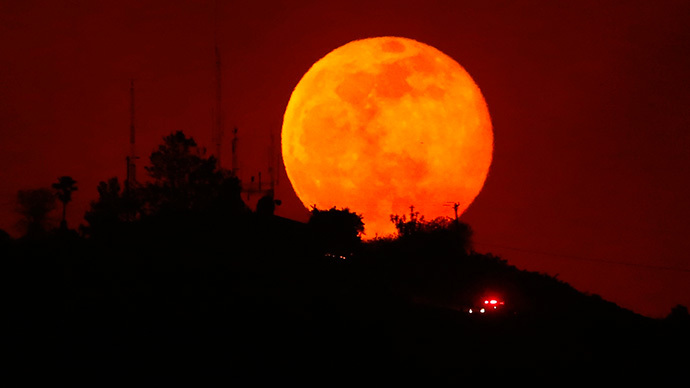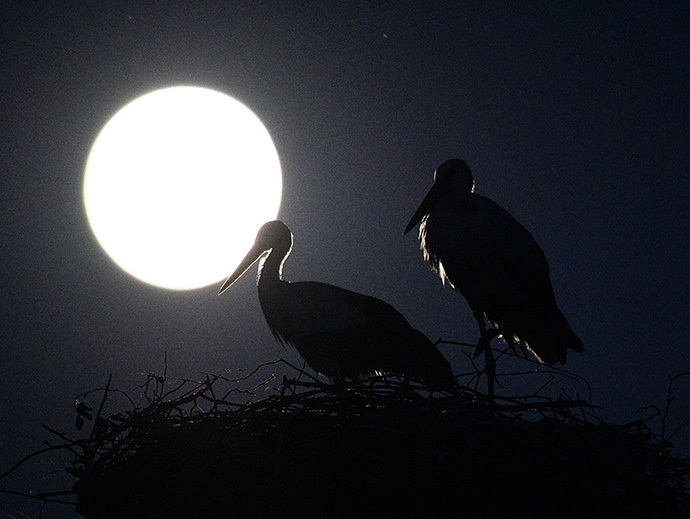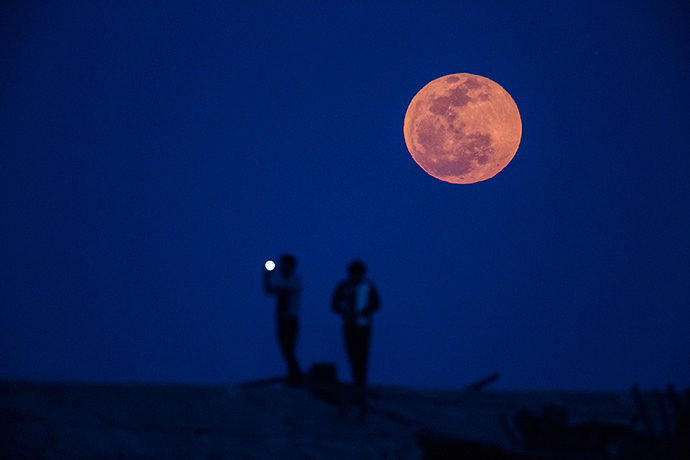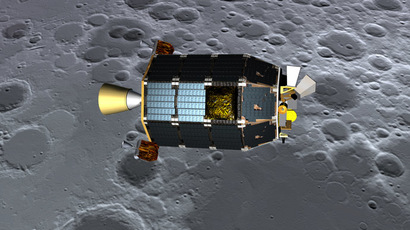Supermoon rising over Earth this weekend

Americans with their eyes to the sky this weekend could get a chance to see Earth’s moon as it rarely appears. Starting Friday evening, a so-called “supermoon” will be viewable across the United States.
There will be a full moon in the sky starting Friday night and into early Saturday, and this time around the super-sized satellite will look larger than usual. When a full moon occurs at the same time that its orbit brings it closest to the Earth, as expected this weekend, onlookers are greeted with what scientists at NASA call a “supermoon.”
Five supermoons are expected in all during the course of 2014, and two of them already happened in the month of January. Beginning Friday evening, however, Americans will have their third chance this year to see a full moon coincide as the satellite’s orbit reaches “perigee” (or “near earth”).
Scientists expect that this weekend’s full moon will reach perigee at around 222,611 miles away from Earth — around 30,000 miles closer than the moon will be when it’s at its furthest this year.

The moon typically reaches perigee every 28 days or so, and traditional full moons are hardly uncommon. When the two occur at the same time, however, stargazers see a moon that appears much brighter and larger than what’s normally expected by turning to the sky.
Don’t be disappointed if weekend plans will keep you too busy to look outside, though: 2014’s fourth and fifth supermoons are expected to occur in August and September, respectively, and the next instance will bring the oribiting space rock even closer to Earth than what’s expected on Friday evening.
Needless to say, these spectacular sightings might be something to behold, but aren’t exactly the rarest of event — on average, they show up around five times a year.

“Like the ‘mini-moon’ and the blue moon, the Supermoon will probably continue to be a part of the informal astronomical lexicon.” Science teacher David Dickinson wrote for Universe Today. “And we'll probably continue to get messages from friends/relatives/random people on Twitter about ‘the biggest full moon ever!’”
In a statement from NASA, Geoff Chester of the US Naval Observatory expressed his annoyance with the lunacy surrounding the whole trend as well.
"There's a part of me that wishes that this 'super-Moon' moniker would just dry up and blow away, like the 'Blood-Moon' that accompanied the most recent lunar eclipse, because it tends to promulgate a lot of mis-information," Chester wrote. "However, if it gets people out and looking at the night sky and maybe hooks them into astronomy, then it's a good thing."














